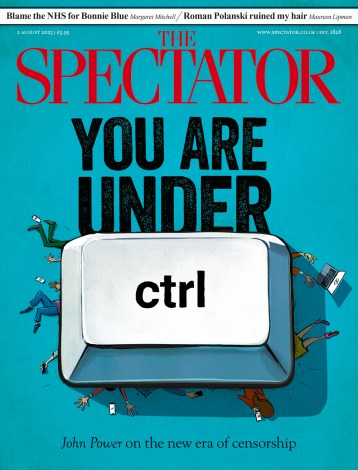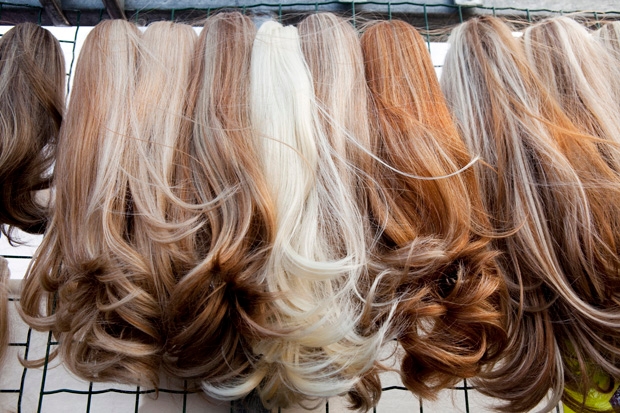[audioplayer src=”http://rss.acast.com/viewfrom22/panictimefordavidcameron-/media.mp3″ title=”Lara Prendergast and Louise Bailey, a hair extensions specialist, discuss the hair trade” startat=1622]
Listen
[/audioplayer]Perhaps you recall the moment in Les Misérables when Fantine chops off all her hair? The destitute young mother sells her long locks, then her teeth (a detail often excluded from child-friendly adaptations) before she is eventually forced into prostitution. It would be nice to think that her experience was no longer a reality, that the business of human hair had gone the way of the guillotine — but the truth is, it’s booming. The modern market for extensions made of real human hair is growing at an incredible rate. In 2013, £42.8 million worth of human hair was imported into the UK, padded out with a little bit of animal hair. That’s a thousand metric tons and, end to end, almost 80 million miles of hair, or if you prefer, two million heads of 50cm long hair. And our hair industry pales in comparison with that of the US.
Two questions spring to mind: first, who is supplying all this hair and, secondly, who on earth is buying it? Unsurprisingly, both sides of the market are cagey. Nobody wants to admit precisely where they are importing hair from and women with extensions like to pretend their hair is their own. Websites selling human hair will occasionally explain that the locks come from religious tonsure ceremonies in India, where women willingly swap hair in return for a blessing. At Tirumala Venkateswara Temple in southern India, tonsuring is customary and it’s one of the most-visited holy sites in the world, so there’s plenty of hair to flog.

This has been described as ‘happy hair’ — and it’s certainly an acceptable story to tell your client as you glue another woman’s dead hair to her scalp. But countries like Russia, China, Ukraine, Peru and Brazil also export large amounts of hair, so where’s that from? The reality behind this hair is probably a grim one. There are reports of female prisoners and women in labour camps being forced to shave their heads so those in charge can sell it off. Even if the women aren’t coerced, no one can be sure that the hair’s original owner received a fair — or any — price.
It’s a strange anomaly in a world in which we’re all obsessed with fair trade and ethical sourcing: nobody seems at all bothered about the origins of their extra hair. But then, the market is hard to regulate and the supply chain is convoluted. Bundles of hair can pass through a number of different countries, which makes it hard to keep tabs on. Then the branding comes in: Chinese hair is marketed as Brazilian, Indian as European. The fact that some websites won’t disclose where their hair comes from is significant. Hair is sourced ‘all over eastern Europe’, says Kelly Reynolds, from Lush Hair Extensions, but ‘we would not know specifically’. A few ‘ethical’ extension companies exist, but in most cases, the customer just doesn’t want to know where the hair is harvested. In the FAQ sections of human hair websites, most queries are things like ‘How do I care for it’ or ‘How long will it last?’ rather than ‘Whose hair is it anyway?’ One profoundly sinister website selling ‘virgin Russian hair’ boasts that the hair ‘has been grown in the cold Siberian regions and has never been chemically treated’. Another site details how to distinguish human and artificial hair: ‘Human hair will turn to ash. It will smell foul. When burning, the human hair will show white smoke. Synthetic hair will be a sticky ball after burning.’ As well as not melting, human hair styles better. Accept no imitations, ladies.
The most expensive option is blonde European hair, a packet of which can fetch more than £1,000. So who buys this? Well, Beyoncé for one. Her hair collection was once estimated to be worth $1 million. And the Kardashians have recently launched a range of extensions under the name ‘Hair Kouture’, designed to give you that ‘long hair don’t care attitude’.
Near where I live in London, there are a number of shops selling all kinds of wigs, weaves and extensions. The signs outside advertise ‘virgin hair’ (which is hair that hasn’t been treated, rather than hair from virgins). Nearby, a local hairdresser does a roaring trade in stitching bundles of hair into the heads of women wanting to look like cast members from The Only Way Is Essex. My own hairdresser tells me she has middle-aged, middle-class women asking for extensions to make them look ‘more like Kate Middleton’. She even suspects Kate might have used extensions, which is a tabloid story waiting to happen: ‘Kate wears my hair!’
Human hair is a precious commodity because it takes time to grow and artificial substitutes are considered inferior. There are women willing to buy and there are women willing to sell, but given the size of the market it’s about time we found out where it’s all from and who benefits. Fantine may have been fictional, but her reality still exists, now on a billion-dollar global scale.
Lara Prendergast is The Spectator’s online editor.







Comments